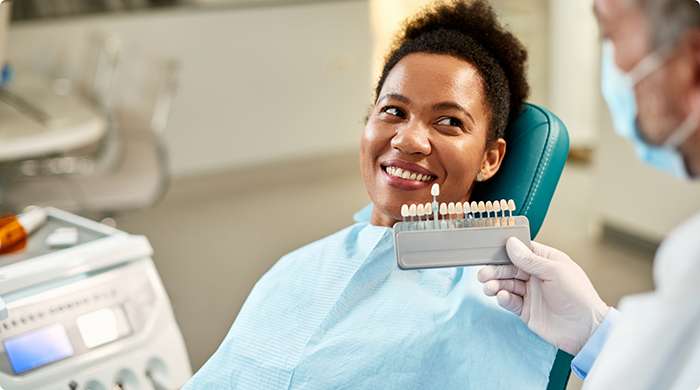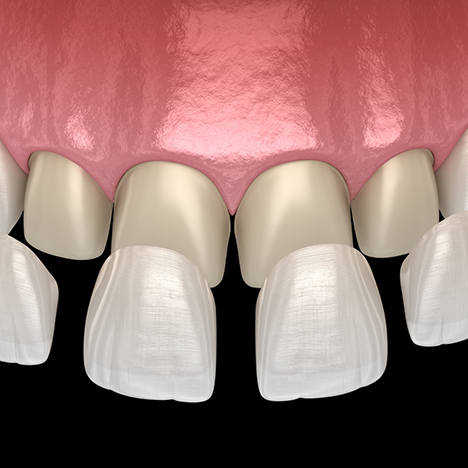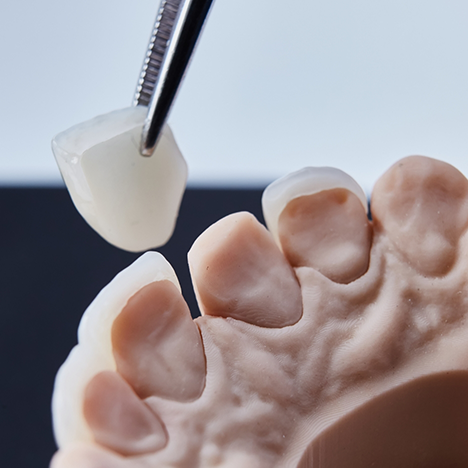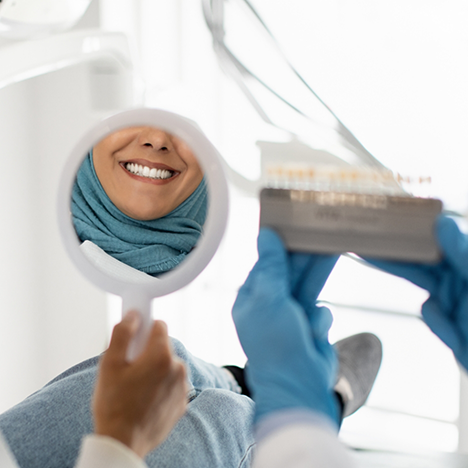Veneers Lancaster
Making Multiple Improvements to Your Smile at Once

A smile speaks volumes—but only when people can see your pearly whites. If you’re embarrassed by the condition of your teeth, then your smile may often remain hidden behind a closed-mouth grin or even your hand. Fortunately, there is a dental solution that usually only requires three appointments with your cosmetic dentist. Veneers in Lancaster are coverings that can hide many imperfections and give you a smile that you’ll be proud to show off. Read on or give our team a call today if you’d like to learn more!
Why Choose Lancaster Family Smiles for Veneers?
- Minimal-Prep Lumineers for a More Conservative Smile Treatment
- Dentists Who Work Closely with Lab Experts
- State-of-the-Art Dental Technology for Ideal Results
What Are Dental Veneers?

Veneers are often called instant orthodontics because they make quick work of altering a smile as significantly as braces—but much faster. Veneers can be used to make slightly crooked teeth look straight; those that have chips, fractures, or noticeable cracks disappear; and they can even be used to close wide spaces between two teeth. These shells are also non-porous, meaning they’re highly resistant to staining and provide a virtually permanent whitening solution for your smile.
The Process of Getting Veneers

The process of receiving your veneers usually means scheduling three appointments with our doctors. On the first visit, one of our dentists will meet with you to discuss the changes you’d like to see happen to your smile. Then, we’ll examine your teeth and gums to ensure they’re healthy enough for a cosmetic procedure. Then, if you agree that veneers are right for you, we’ll take an impression of your teeth that our dental lab will use to create temporary veneers.
At your second appointment, we’ll administer a local anesthetic and then carefully reshape the teeth that will receive veneers. No more than a thin layer of your enamel needs to be removed. When this step is completed, another impression is taken and sent to our dental lab for fabrication of the final veneers that are manufactured according to the details you and our doctors select. We work closely with the lab to ensure that your new smile is completely customized and natural. We consider factors such as your skin color and even your personality when specifying the size, shape, and color of your veneers.
At the third and final visit, we will replace the temporary veneers with the permanent set. Now, the smile you and others around you see will be perfect!
The Benefits of Veneers

Veneers are one the most popular and effective cosmetic dental methods because they offer numerous benefits, including:
- Minimally invasive treatment
- Improves the size, shape, color, and proportions of your teeth
- Durable and natural-looking solution
- Can last 20 years or more with proper care
Veneers FAQs
Are Veneers Permanent?
Although veneers are commonly made out of porcelain and are durable enough to withstand excessive pressure from chewing, you’ll eventually have to replace them. The only permanent aspect of this treatment is the preparation of your tooth. We will need to remove a tiny portion of your enamel to make room for your veneers, which will not grow back on its own. This means you’ll always need either veneers or crowns to cover the exposed teeth.
How Many Veneers Will I Need?
The number of veneers you’ll need will depend on both your smile goals and your specific dental situation. Our priority is for all of your visible teeth to appear uniform, so we’ll likely provide an appropriate amount that will help achieve this objective. If you only have one pesky tooth that’s stained or chipped, then you may only require a single veneer. Some patients may opt for 6 to 8 shells for a more complete smile makeover.
Will I Still Be Able to Drink Coffee with Veneers?
Veneers are non-porous and highly resistant to stains and discoloration. This means particles from dark-colored meals and beverages will have a more difficult time penetrating the surface of your layers. You’ll be able to freely enjoy all of your favorite foods and drinks, such as a morning cup of joe, without having to worry much about staining your veneers. That said, you should know that your restorations aren’t stain-proof, as they can still become discolored from overindulging in coffee over time. The key is moderation and rinsing your mouth out as often as possible!
Do Veneers Give You a Lisp?
Some patients find it difficult to pronounce certain sounds or words when first receiving their veneers, which can result in a temporary lisp. This is somewhat due to muscle memory, as your tongue will need to grow accustomed to the presence of your new teeth when you talk. A lisp can typically occur when trying to pronounce the “S” and “V” sounds. While this condition might only be temporary, it’s best to practice saying difficult words or phrases to help speed up the process.
I Need a Checkup & Cleaning I Am Looking for a Dentist for My Child I am Worried About Gum Disease I Have a Cavity or Broken Tooth I am Missing One or More Teeth I Want to Enhance My Smile I Want a Straighter Smile I am Scared of the Dentist I Have a Dental Emergency View Our Services

 Se Habla Español
Se Habla Español
